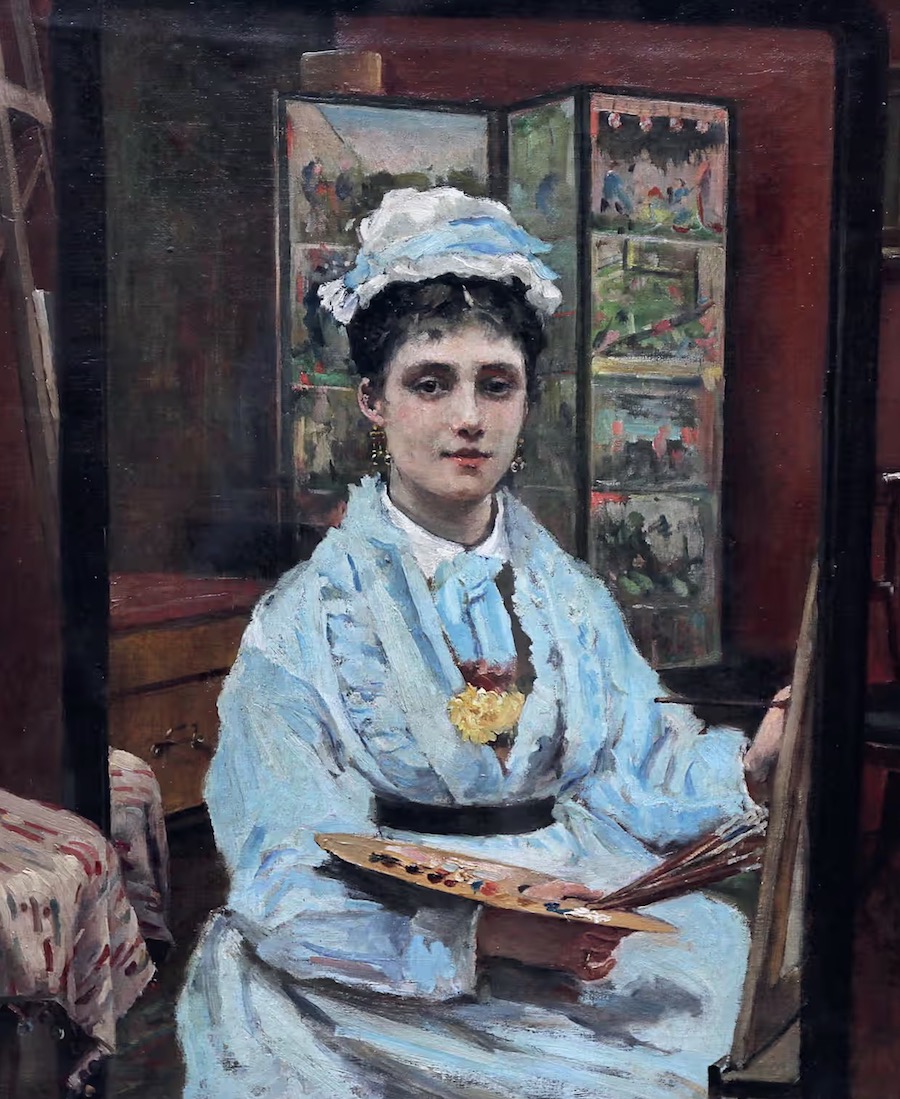Tate Britain has made an exceptional acquisition, bringing to light the often-overlooked brilliance of Louise Jopling, a pioneering English artist whose legacy has languished in obscurity for over a century. Jopling, a prominent figure in the 19th-century art scene and a staunch suffragist, was sidelined by an art establishment that failed to recognise her professional achievements.
The painting in question, a captivating self-portrait created in 1875 during Jopling’s pregnancy with her son, Lindsay, is a poignant nod to her talent and resilience. Titled “Through the Looking Glass,” this artwork is a gateway into Jopling’s world and her remarkable journey as a woman artist in Victorian England.
Tate Britain’s acquisition of this work is a significant and pivotal moment in art history. It marks the institution’s commitment to rectifying the long-standing neglect of Jopling’s contributions and its role in preserving and promoting the often-overlooked work of female artists throughout British history. The painting will take centre stage in the gallery’s upcoming exhibition, “Now You See Us.”

According to Tabitha Barber, curator of the exhibition, Jopling’s story mirrors the challenges faced by countless women artists whose talents were disregarded and whose legacies were erased by patriarchal norms. Despite her significant achievements and the admiration of her contemporaries, including luminaries like James McNeill Whistler, Jopling’s artistic brilliance faded into obscurity over time.
Jopling’s rise to artistic prominence was unconventional. She pursued formal art training in Paris, defying societal expectations for women of her era. Her determination and talent propelled her to success, with her works exhibited regularly at the Royal Academy and sought after by prominent patrons.
Jopling’s remarkable story is not just a historical account but a powerful reminder of the resilience and creativity of women artists throughout history. Her self-portrait, now a part of the national collection at Tate Britain, stands as a symbol of the indomitable spirit of women in the face of adversity, inspiring us all.
Louise Jopling (1843–1933) was a pioneering English artist. Born Louise Goode in Manchester in 1843, she showed an early talent for art and received encouragement from the Baroness de Rothschild to pursue formal training in Paris. This marked the beginning of her journey into the art world, a path that would challenge societal norms and establish her as a prominent figure in the 19th-century art scene.
Jopling’s artistic pursuits flourished in Paris, where she honed her skills and developed a distinctive style characterised by vibrant colours and dynamic compositions. Upon her return to England, she gained recognition for her portraits and genre scenes, which captured the essence of Victorian society with sensitivity and insight.
Despite gender-based obstacles, Jopling’s talent and determination propelled her to succeed. In 1901, she became one of the first women admitted to the Royal Society of British Artists, a testament to her trailblazing spirit and artistic prowess. Throughout her career, she exhibited regularly at prestigious institutions such as the Royal Academy, where her works garnered praise from critics and patrons.
Jopling’s art was celebrated for its technical skill, emotional depth, and humanistic approach. She depicted subjects ranging from intimate family moments to grand society gatherings, infusing each painting with vitality and authenticity.
Beyond her artistic achievements, Jopling was a staunch advocate for women’s rights. She actively participated in the suffragist movement and used her platform to champion gender equality in the arts. Her courage and resilience in the face of adversity inspired generations of artists and paved the way for future women creatives.
Today, Louise Jopling’s legacy endures the power of artistic expression and the indomitable spirit of those who dare to defy conventions. Her contributions to the art world continue to be celebrated and admired, ensuring that her name remains etched in the annals of art history for generations to come.
Through the Looking Glass, Jopling’s first painting to enter the national collection, will be shown alongside two other paintings in the gallery’s new exhibition, Now You See Us, which opens on Thursday. It explores female artists throughout British history.

